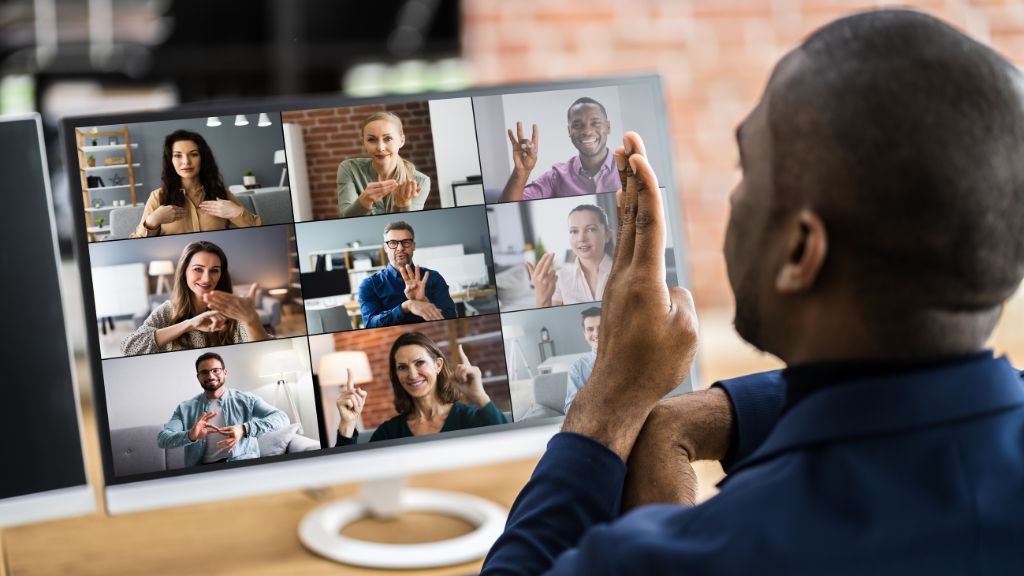Deaf Accessibility: Web Accessibility For Hard-of-Hearing Users
Today, over 1.5 billion people (1) around the world are living with some form of hearing disability.
And while you might think that those with hearing impairments don’t have as hard a time exploring the web when compared to blind or physically disabled users, you would be wrong.
Consider how much video and audio media is present on websites and social media. Without the right tools and the implementation of web accessibility, these assets cannot be accessed by those with hearing disabilities.
In this blog, we delve a little deeper into hearing impairments and what you can learn from deaf accessibility technology to make your site more accessible.
What Is a Hearing Impairment?

Hearing impairments are dependent on a person’s degree of hearing as well as the age of onset.
Many people are born with deafness and will rely on sign language to communicate for the rest of their lives. Then there are those who became deaf later in life and will also rely on sign language to communicate.
Lastly, there are people who are not completely deaf but are significantly hard of hearing. Those who are hard of hearing usually struggle with conditions such as diabetes and hypertension, which are triggers.
Understanding the Different Types of Hearing Impairments
Next, let’s explore the different types of hearing impairments your website users might be living with.
- Conductive hearing loss. This is when damage to the outer or middle ear prevents sound from entering the middle ear.
- Sensorineural hearing loss. When the inner ear, auditory nerve, or cochlea is damaged, it causes this type of hearing loss.
- Tinnitus. Users with tinnitus experience a ringing or buzzing in the ear due to age or damage from prolonged periods of loud noise.
- Auditory processing disorders. How the central nervous system interprets sound is integral to healthy hearing. Users with auditory processing disorders have difficulty remembering what they heard and differentiating between what they need to hear and background noise. It can also make language processing difficult.
Why Web Accessibility Matters to Those with Hearing Disabilities
Having an accessible website means you aren’t isolating users and customers living with hearing impairments – they get to have a similar experience to all other users.
When a site is accessible, it ensures users with hearing disabilities are able to engage and interact with all content, media, and functionality across your site.
As a business, taking the time to make your site ADA compliant will indicate that you care and are dedicated to inclusivity and making the lives of your users less complicated. As an added bonus, taking these steps also helps you avoid costly and unnecessary accessibility lawsuits, which are still on the rise.
Examples of Deaf Accessibility Technology

In order to use the web more easily, users who are hard of hearing rely on certain types of assistive technology, with automatic speech recognition (ASR) being the primary type.
ASR technology turns spoken language into text, ensuring deaf and hard-of-hearing users understand what’s being said.
Here are some examples of the top ASR platforms that offer interface accessibility for people with hearing deficiencies.
- Google’s Live Transcribe. This program uses Google’s speech-recognition technology to give hearing-impaired users insight into the conversations happening around them. Google’s Live Transcribe works with 70 different languages and dialects and allows for bilingual communication. Conversations can also be stored on the user’s device for later reference.
- Ava. This particular platform focuses on group conversations. Once a user downloads the app, they can join a group conversation, which will display as text on their phones. The app is available on both iOS and Android and transcribes in real time, making it easier to keep up and join in.
- Roger Voice. With Roger Voice, users are able to engage in voice calls with the help of real-time subtitles. This too is available on iOS and Android, with the first 30 minutes of calls being free. Calls can be transcribed from mobile as well as landlines.
- TextHear. This is another app that converts conversations to text on a mobile device. It supports over 100 languages and accents and text can be archived for later reference.
9 Tips to Improve Web Accessibility for the Hearing Disabled
In order to comply with ADA guidelines, here are some of the steps you can take to make your site more accessible to those living with hearing disabilities.
1. Offer More Than One Way to Get In Touch
It’s only natural to include a phone number on your website, but if you also want to cater to users with hearing disabilities, it’s recommended that you include other contact options such as live chat or email.
2. Add Media Player Controls
Make sure that all users can fully control the video they’re watching. Adding more media player controls will ensure users can easily activate captions and control the volume of a video.
3. Include Subtitles and Captions
If your site includes audio and video files, it’s essential to include subtitles and captions for users who are hard of hearing. There are a number of free, automated video captioning tools that you can use for this. Be sure to review any captions before you post them to check for accuracy or the message could get lost in translation.
4. Summarize Your Content
As much as you want to add captions and subtitles to your audio and video content, it’s just as important to provide an easy-to-read overview.
5. Simplify Your Navigation
Every user, including those with hearing impairments, should be able to get from point A to point B in as few clicks as possible.
6. Stick to Simple Language
Using plain, simple English ensures that hearing-impaired users who use English as their second language can fully understand your content. Stick to short, simple sentences and stay away from jargon wherever possible.
7. Review Your Content Structure
Any user who relies on assistive technology has an easier time navigating a website when the structure is clear. Use the right heading and paragraph tags and break up your content using bullet points where necessary.
8. Supply Content Alternatives
If you have an audio or a video clip with a summary, add alternative types of content to help get your point across. Images and infographics are good examples of this.
9. Make Your Content Flexible
Understand that many of your users will be accessing your site on mobile devices, including Apple watches, so keep your content flexible enough that it can be accessed everywhere. To do this, make sure it’s possible to enlarge the screen and render it using a screen reader.
Final Words
With disability awareness being a bigger topic than ever before, businesses can no longer afford to have websites that don’t comply with ADA and web accessibility guidelines.
Catering to all types of users will also be a positive step for your brand as customers discover that you’re taking steps to make their online experience more seamless.
FAQ
Hearing-impaired users mostly rely on ASR technology to access websites. Automatic speech recognition (ASR) technology helps convert spoken words and audio into text, ensuring deaf and hard-of-hearing users can understand what’s being said and engage in conversations.


